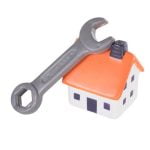Home improvements play a crucial role in maintaining and enhancing the value of our homes. Whether it’s fixing a leaky roof, updating outdated appliances, or adding a fresh coat of paint, these improvements not only make our living spaces more comfortable and visually appealing but also contribute to the overall value of our properties. In this article, we will explore the factors to consider when determining how much to spend on home improvements each year.
One key reason why home improvements are important is their impact on property value. When potential buyers or appraisers evaluate a house, they consider the condition and quality of its features and amenities. By investing in regular maintenance and targeted upgrades, homeowners can increase their property’s attractiveness to buyers and potentially command higher selling prices in the future. Additionally, well-maintained homes are less likely to experience major issues that could diminish their value over time.
Determining your budget for home improvements is an essential step in effectively managing your finances and achieving your goals. It starts with assessing your financial situation – understanding how much money you have available for discretionary spending after covering essential expenses. Setting realistic goals and expectations is crucial to avoiding overspending or falling into debt. A breakdown of long-term improvement plans versus short-term repairs helps ensure that you allocate sufficient funds for both immediate needs and gradual enhancements.
In this article, we will unravel the complexities surrounding budgeting for home improvements by addressing key factors to consider, such as the age and condition of your home. We will discuss practical tips for evaluating costs based on different types of projects and explore ways to maximize your budget through cost-saving alternatives or government assistance programs.
Additionally, we will emphasize the importance of planning for future home improvements as part of a long-term maintenance strategy while maintaining flexibility to adjust your budget based on personal circumstances.
By understanding the importance of home improvements and following a thoughtful budgeting approach, homeowners can strike the right balance between necessary repairs and value-enhancing upgrades. With this guide, you will gain the knowledge and tools needed to make informed decisions on how much to spend on home improvements each year, ensuring a harmonious transformation of your living space while protecting your financial well-being.
Determining your budget for home improvements
Assessing your financial situation is the first step in determining your budget for home improvements. Begin by evaluating your income, expenses, and any outstanding debts. This will give you a clear understanding of how much money you have available to allocate towards home improvement projects. It’s important to be realistic about what you can afford and avoid stretching yourself too thin financially.
Once you have assessed your financial situation, it’s time to set realistic goals and expectations for your home improvements. Consider what areas of your home you want to improve and prioritize them based on importance. Determine whether you are looking for long-term improvements that will increase the value of your property or short-term improvements that enhance the aesthetic appeal of your home.
When budgeting for home improvements, it’s essential to consider both short-term and long-term projects. Short-term projects may include cosmetic upgrades such as painting or replacing a bathroom vanity, while long-term projects could involve major renovations like kitchen remodeling or adding an extension to your house. By considering both types of improvements, you can create a well-rounded budget that allows for ongoing maintenance and necessary repairs alongside ambitious renovation plans.
To help organize your budgeting decisions, create a list of factors to consider when budgeting for home improvements. Firstly, take into account the age and condition of your home. Older homes may require more extensive repairs and updates compared to newer ones.
Next, identify areas of improvement that are most in need or will provide the greatest benefit in terms of functionality or aesthetics. Prioritize necessary repairs over purely cosmetic changes to ensure the safety and structural integrity of your home.
Overall, determining your budget for home improvements requires careful consideration of factors such as financial circumstances, goal setting, and prioritization. By assessing these aspects thoughtfully, homeowners can create budgets that align with their needs and priorities while making their homes more comfortable, appealing, and valuable in the process.
Factors to consider when budgeting for home improvements
- Age and condition of your home.
- Identifying areas of improvement.
- Prioritizing necessary repairs.
Factors to consider when budgeting for home improvements
Age and condition of your home
One of the key factors to consider when budgeting for home improvements is the age and condition of your home. Older homes may require more frequent and extensive repairs and renovations compared to newer ones.
Assessing the overall condition of your home can help you determine which areas need immediate attention, such as replacing a leaky roof or upgrading outdated electrical systems. By prioritizing necessary repairs based on the age and condition of your home, you can allocate your budget effectively.
Identifying areas of improvement
To create an accurate budget for home improvements, it’s important to identify specific areas that need improvement. Conduct a thorough inspection of your property, both inside and outside, to identify any potential issues or areas that could benefit from upgrades. This could include anything from updating kitchen appliances and bathroom fixtures to repairing cracked foundations or improving energy efficiency. By identifying these areas, you can prioritize projects and allocate funds accordingly.
Prioritizing necessary repairs
Not all home improvements are created equal in terms of necessity. Some repairs may be urgent and essential for safety or functionality reasons, while others may be more cosmetic or optional. It’s important to prioritize necessary repairs over aesthetic enhancements when creating your budget.
This ensures that vital issues are addressed before allocating funds towards discretionary upgrades. Keep in mind that delaying necessary repairs can lead to more significant problems down the line, costing you more money in the long run.
By taking into account the age and condition of your home, identifying specific areas that need improvement, and prioritizing necessary repairs, you can develop a realistic budget for home improvements. This approach allows you to address urgent needs while strategically planning for future enhancements.
Evaluating the cost of different types of home improvements
Researching average costs for common home improvement projects is a helpful starting point. This can be done by consulting online resources, speaking with professionals in the industry, or even reaching out to friends or family who have recently completed similar projects. Creating a list of potential projects along with their estimated costs will give you a better idea of how much you need to budget.
Once you have an idea of the costs involved, it’s essential to gather multiple quotes from contractors or professionals. Getting multiple quotes will help in determining the average cost for each project based on local labor and material prices. It also gives you an opportunity to evaluate different options and choose the contractor that offers the best value for your money.
In addition to the initial costs, it’s important to consider potential hidden costs that may arise during the course of your home improvement projects. Some common hidden costs include unforeseen repairs or upgrades required during construction, permit fees, and unexpected delays that may result in additional labor expenses. To account for these hidden costs, it is recommended to set aside a contingency fund within your budget.
By thoroughly evaluating the cost of different types of home improvements and considering potential hidden expenses, you can create a more realistic budget for your renovation projects. This will help ensure that you are financially prepared and able to complete your desired improvements without encountering any financial setbacks along the way.
Balancing home improvement expenses with other financial priorities
When it comes to budgeting for home improvements, it’s essential to strike a balance between enhancing your living space and maintaining your overall financial stability. While investing in your home is important, it’s equally crucial to consider other financial priorities you may have. This section will provide tips on how to effectively balance home improvement expenses with other financial goals.
Firstly, it’s important to prioritize home improvements within your overall budget. Take into account your income, expenses, and any existing debts or savings goals you may have. Consider how much you can comfortably allocate towards home improvements without compromising other financial responsibilities. This will ensure that you don’t overspend on renovations and end up in a financially challenging situation.
Additionally, it’s crucial to consider the impact of home improvement expenses on your savings or debt repayment goals. If you’re actively working towards saving for a down payment on a new house or paying off high-interest debts, you should weigh the importance of those goals against immediate renovations. It may be necessary to adjust your home improvement budget accordingly to prioritize these long-term objectives.
In some cases, alternative funding options can also help alleviate the burden of balancing home improvement expenses with other financial priorities. For example, grants or loans specifically designed for energy-efficient upgrades or improving accessibility might be available through government assistance programs. Additionally, research local tax credits or rebates that can offset some of the costs of certain renovations. Exploring these options may allow you to proceed with necessary improvements without straining your budget.
By considering these factors and finding the right balance between home improvements and other financial goals, you can make informed decisions about how much to spend on renovations each year. Remember, achieving an ideal balance will ultimately depend on understanding your individual circumstances and aligning your budget with your specific needs and priorities.
Tips for maximizing your home improvement budget
DIY vs. Hiring Professionals
One way to maximize your home improvement budget is to decide whether you should tackle the projects yourself or hire professionals. DIY projects can save you money on labor costs, but they require time, effort, and skill. Before deciding to do it yourself, consider your level of expertise and the complexity of the project.
Simple tasks like painting or installing a new light fixture may be suitable for a DIY approach, while major renovations such as plumbing or electrical work are often best left to professionals. Assess your capabilities honestly and weigh the cost savings against potential risks or mistakes that could end up costing you more in the long run.
Exploring Cost-Saving Alternatives
There are several ways to stretch your home improvement budget by exploring cost-saving alternatives. One option is to seek out less expensive materials or finishes that still meet your desired aesthetic and quality standards. For example, consider opting for laminate countertops instead of granite or vinyl flooring instead of hardwood.
Another cost-saving strategy is to repurpose or upcycle items instead of buying completely new ones. This could involve refinishing furniture rather than buying new pieces or using leftover materials from one project for another. Additionally, shopping sales or taking advantage of seasonal discounts can help you find deals on necessary supplies.
Utilizing Government Assistance Programs or Tax Credits
Another avenue for maximizing your home improvement budget is to take advantage of government assistance programs or tax credits that may be available to homeowners. Some jurisdictions offer grants, loans, or subsidies for specific types of renovations, particularly those aimed at improving energy efficiency or accessibility. These programs can help offset some of the costs associated with these types of improvements.
Additionally, there may be tax credits available for certain eligible upgrades such as installing solar panels or replacing windows with energy-efficient models. Research the options in your area and consult with a tax professional to ensure you are taking full advantage of any available financial incentives.
By employing these tips for maximizing your home improvement budget, you can make the most out of the funds you allocate for home improvements. Whether you choose to DIY or hire professionals, explore cost-saving alternatives, or utilize government assistance programs, it’s important to find the right balance between your goals and financial capabilities.
Remember that home improvements not only enhance the comfort and functionality of your living space but also contribute to the long-term value of your property.
Planning for future home improvements
When it comes to home improvements, it is important to not only focus on the short-term projects but also have a long-term improvement plan. Planning for future home improvements can help you prioritize your goals and budget accordingly, ensuring that your home stays in good condition and increases in value over time.
Creating a long-term improvement plan is essential for homeowners who want to stay organized and proactive with their home maintenance. This plan should outline the major areas of improvement you want to tackle in the coming years, as well as any necessary updates or regular maintenance tasks. By having a clear plan in place, you can budget more effectively and ensure that you are making progress towards your desired upgrades.
Budgeting for regular maintenance and updates should also be a part of your long-term improvement plan. While it can be tempting to focus solely on larger projects, neglecting regular maintenance can lead to bigger issues down the line. By setting aside a portion of your home improvement budget specifically for routine tasks like HVAC inspections, gutter cleanings, and roof repairs, you can prevent costly damage and extend the lifespan of your home’s components.
Incorporating resale value into your decision-making process is another important consideration when planning for future home improvements. While you may have personal preferences and aesthetic choices when it comes to upgrades, it is crucial to think about how these improvements will impact the overall value of your property. Research which renovations tend to have the highest return on investment (ROI) in your local market and prioritize those projects that will yield the greatest financial benefits.
To summarize, planning for future home improvements involves creating a long-term improvement plan, budgeting for regular maintenance and updates, and considering resale value. By taking these steps, you can ensure that your home remains in good condition while also increasing its value over time. It is important to periodically reassess your plan and make adjustments based on changing circumstances or new goals that may arise.
Adjusting your home improvement budget based on personal circumstances
When it comes to budgeting for home improvements, it is important to be aware that personal circumstances can have a significant impact on the amount of money you allocate each year. Life changes, unexpected expenses, and emergencies can all influence the amount of money you are able to spend on improving your home. Flexibility in reallocating funds is key in ensuring that you are able to still make necessary improvements while also addressing other financial priorities.
One major factor that may require adjustments in your home improvement budget is lifestyle changes. For example, if you have recently had a baby or are planning to start a family soon, you may need to allocate more funds towards child-related expenses and less towards home improvements. On the other hand, if your children have moved out and you are now empty nesters, you may have more disposable income to invest in larger-scale renovations or upgrades.
Another consideration is unexpected expenses or emergencies that may arise. Whether it’s unforeseen medical bills, car repairs, or home repairs not accounted for in your initial budget, these unexpected costs can significantly impact your ability to spend on home improvements. In such cases, it might be necessary to adjust your allocation for home improvements until you can recover financially.
Being flexible with your budget is crucial when facing personal circumstances that affect your finances. It is important to regularly review and reassess your budget so that it reflects any changes in your situation. By remaining adaptable and open to adjusting your home improvement budget as needed, you can ensure that you are making the best possible use of the resources available to you.
| Personal Circumstances | Impact on Budget Allocation |
|---|---|
| Lifestyle Changes | May require reallocating funds based on new priorities (e.g., starting a family, becoming empty nesters) |
| Unexpected Expenses or Emergencies | May necessitate temporarily reducing or reallocating funds for home improvements in order to cover unforeseen costs |
Conclusion
In conclusion, determining how much to spend on home improvements each year requires finding the right balance between your goals and priorities. Home improvements are important for maintaining and enhancing your home, as well as increasing its property value. When budgeting for these improvements, it is essential to assess your financial situation and set realistic goals and expectations.
Factors such as the age and condition of your home should be considered when deciding on areas of improvement and prioritizing necessary repairs. Researching average costs for common projects and gathering multiple quotes from contractors can help you evaluate the potential expenses. It is also crucial to understand potential hidden costs that may arise during the renovation process.
Balancing home improvement expenses with other financial priorities is necessary to ensure overall financial stability. Prioritizing home improvements within your overall budget while considering the impact on savings or debt repayment goals is key. Additionally, exploring alternative funding options can help make your home improvement plans more financially feasible.
To maximize your home improvement budget, consider whether certain projects can be done yourself or if hiring professionals is required. Exploring cost-saving alternatives and utilizing government assistance programs or tax credits can also help stretch your budget further.
Planning for future improvements by creating a long-term improvement plan and budgeting for regular maintenance will contribute to keeping your home in good condition over time. Lastly, adjusting your home improvement budget based on personal circumstances such as lifestyle changes or unexpected expenses is crucial to maintain flexibility in reallocating funds.
In summary, finding the right balance for your home improvement budget involves aligning your goals and priorities with your financial resources. By carefully assessing your financial situation, prioritizing necessary repairs, researching costs, and exploring alternative funding options, you can make informed decisions about how much to spend on improving your home each year. Remember, periodic home improvements are vital not only for maintaining the integrity of your property but also for enhancing its value in the long run.
Frequently Asked Questions
How much should you spend on home maintenance per year?
The amount that should be spent on home maintenance per year varies depending on factors such as the size and age of the home, its location, and the individual’s financial situation. Generally, experts recommend setting aside 1% to 3% of a home’s value for annual maintenance expenses.
For example, if your home is worth $300,000, you may consider allocating $3,000 to $9,000 per year for maintenance and repairs. This should cover regular tasks like servicing HVAC systems, cleaning gutters, replacing filters, and addressing minor repairs and upkeep needs.
What is the 1% maintenance rule?
The 1% maintenance rule is a guideline used by some homeowners to estimate their annual maintenance budget. It suggests setting aside 1% of a home’s value each year for routine upkeep and repairs. While this rule can provide a starting point for budgeting purposes, it’s essential to remember that every household’s circumstances differ.
Some homes may require less frequent or costly repairs compared to others due to variations in quality or recent renovations. Therefore, this rule should be considered as just one factor in determining your personal budget for home maintenance.
How much does the average person spend on home repairs?
The average amount an individual spends on home repairs can vary widely based on numerous factors including the size and condition of the property as well as their personal preferences regarding upgrades or renovations. According to surveys conducted by HomeAdvisor in recent years, homeowners across the United States typically spend between $1,200 and $4,200 annually on maintenance projects alone.
However, these figures do not include major renovations or remodels which can significantly increase the average spending on home repairs if undertaken within a given period. Ultimately, individual circumstances such as age of the home or specific repair needs will heavily influence how much someone spends on tending to their residence throughout the year.

I’m thrilled to have you here as a part of the Remodeling Top community. This is where my journey as an architect and remodeling enthusiast intersects with your passion for transforming houses into dream homes.





